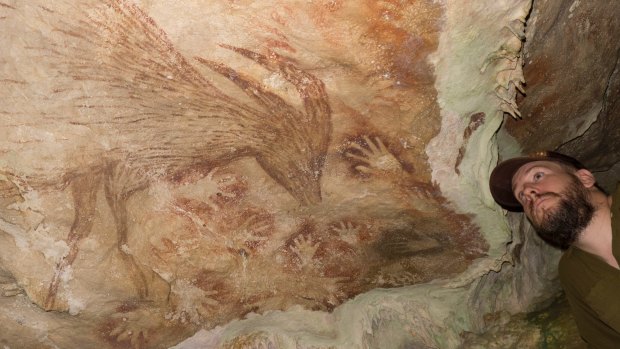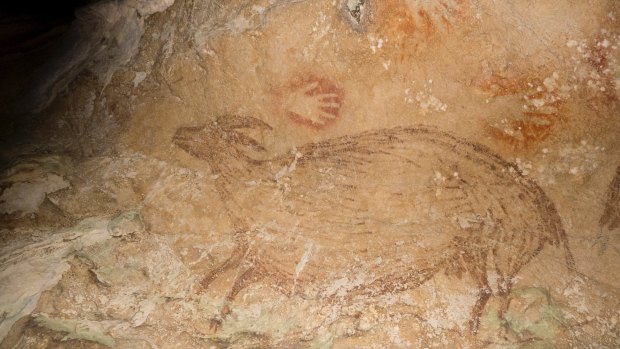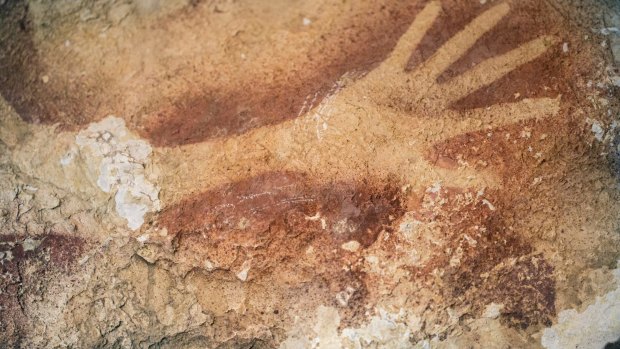This was published 10 years ago
Indonesian cave paintings some of earliest human art, Australian-led study finds
Cave paintings on the Indonesian island of Sulawesi were created up to 40,000 years ago, making them some of the earliest known cave art in the world, says a team of Australian and Indonesian scientists.
While the paintings were reported in the 1950s, experts assumed they were less than 10,000 years old because of the erosion rate in the limestone caves in which they were found.

Researchers, including Maxime Aubert, have analysed several drawings from seven different Indonesian caves and discovered they were painted much earlier than first thought.Credit: Adam Brumm
For the first time researchers, led by dating expert Maxime Aubert of Griffith University, have analysed several drawings from seven different caves and discovered they were painted much earlier than first thought.
The team's findings challenge long-held beliefs that cave art – one of the defining developments of modern humans – originated in Europe.

Early art: "Deer-pig" paintings from the Indonesian island of Sulawesi have been dated to at least 40,000 years old.Credit: Adam Brumm
Specifically, the team dated the small calcite growths that had grown over the art, known as "cave popcorn", which contain trace amounts of uranium.
Its results are published in the scientific journal Nature.
Dutch archaeologist Wil Roebroeks, who was not part of the study, said the radioactive decay of uranium atoms acted like a clock, enabling dating of the calcite formations using a technique that measured the ratio of uranium and thorium.
"In cases where calcite overlies cave paintings, dating its formation can yield a minimum age for the art," Professor Roebroeks wrote in a comment piece.

Hand stencils from the Indonesian island of Sulawesi have been dated to at least 40,000 years old.Credit: Kinez Riza
Samples of cave popcorn over the paintings, 12 stencilled outlines of human hands and two drawings of primitive fruit-eating pigs called babirusas, showed the art ranged in age from 39,900 to 17,400 years.
An Indonesian team member, Thomas Sutikna, who is studying at the University of Wollongong, said the findings had important implications for theories of human evolution.
"Rock art is one of the first indicators of an abstract mind – the onset of being human, as we know it," he said.
Dr Aubert said it was previously thought western Europe was the centrepiece of early human artistic activity, such as cave painting and other forms of image-making, about 40,000 years ago.
A painting of a red disk at El Castillo in Spain, the oldest dated rock art in the world, has a minimum age of 41,000 years.
"However, our findings show that cave art was made at opposite ends of the Pleistocene Eurasian world at about the same time, suggesting these practices have deeper origins, perhaps in Africa before our species left this continent and spread across the globe," he said.